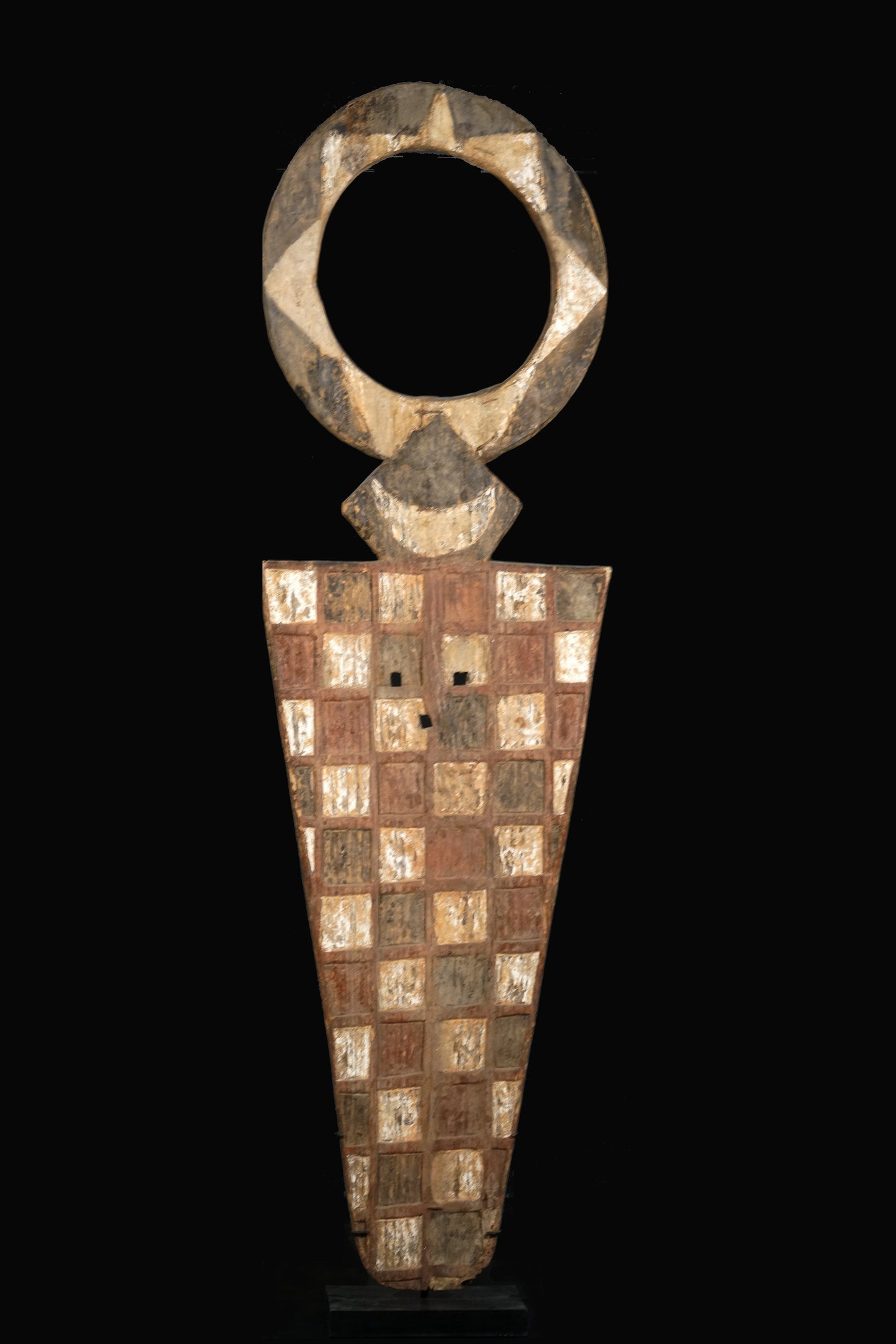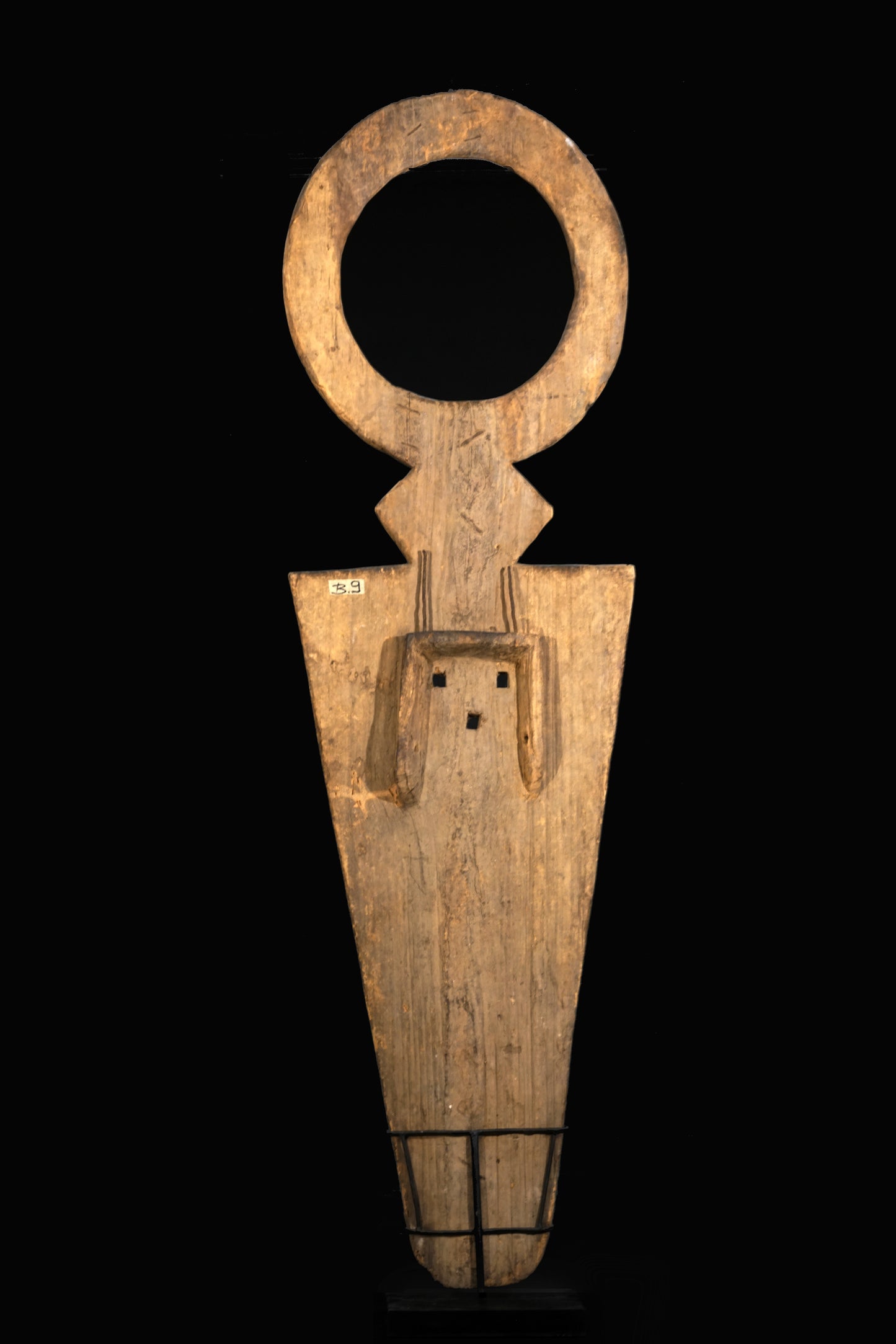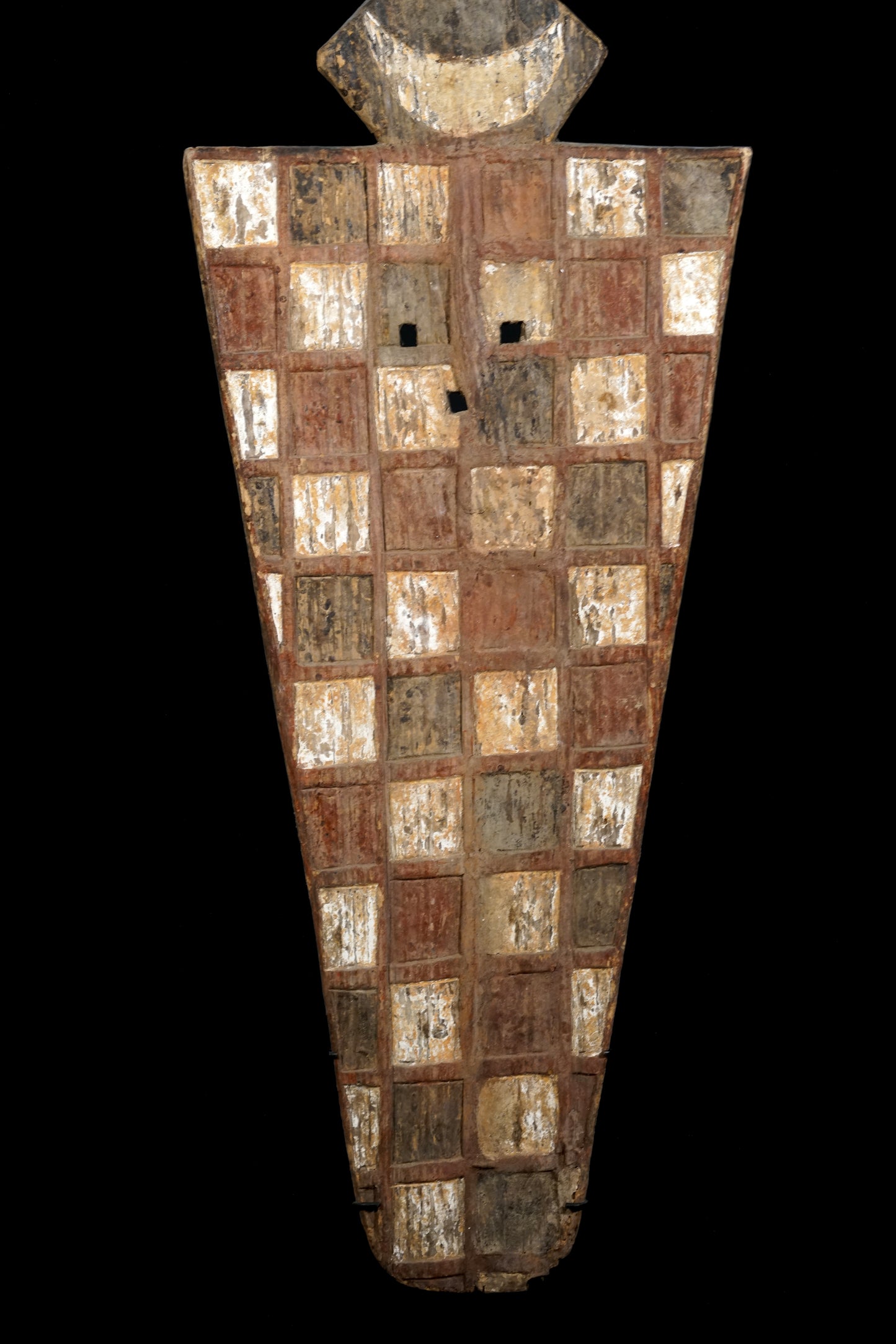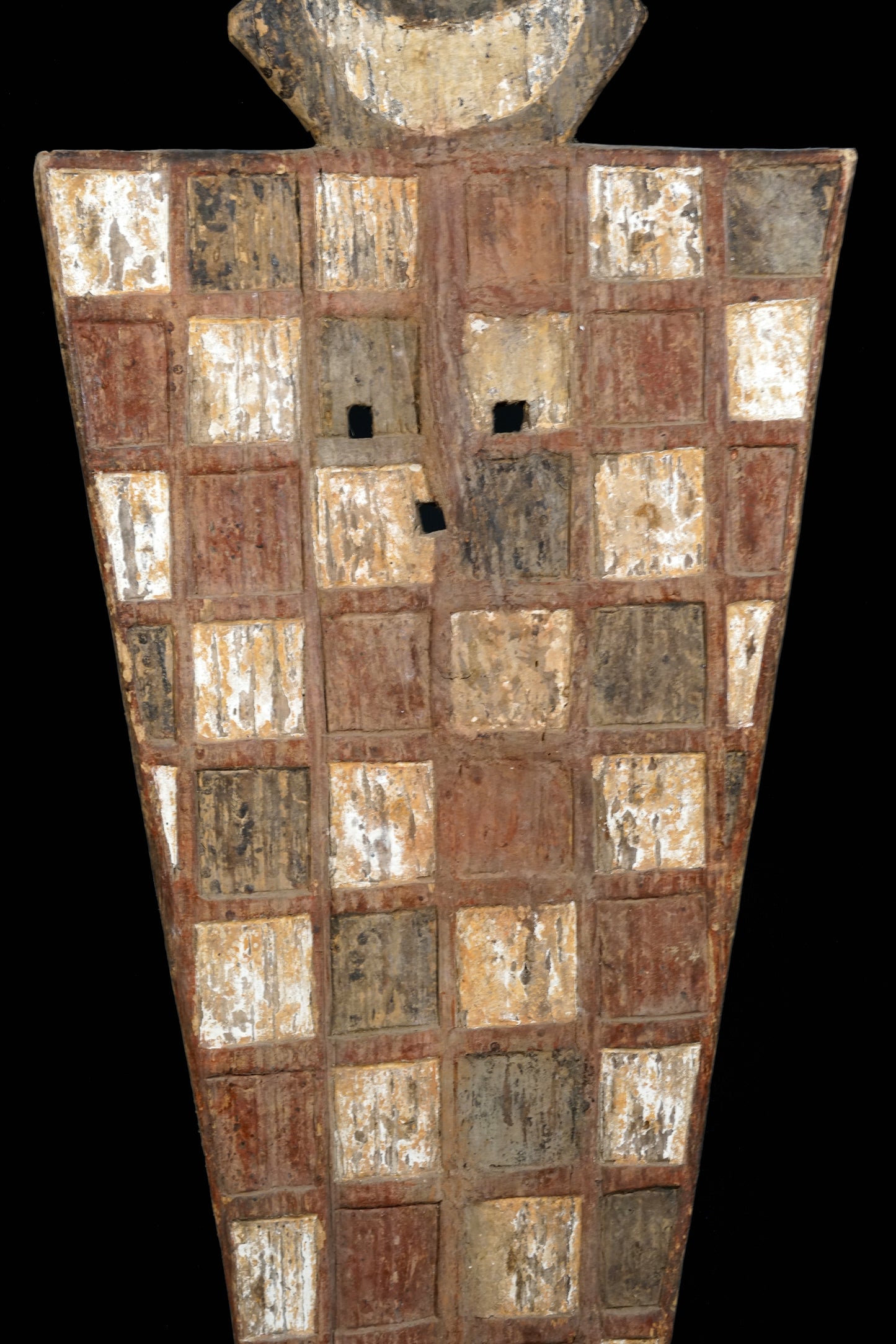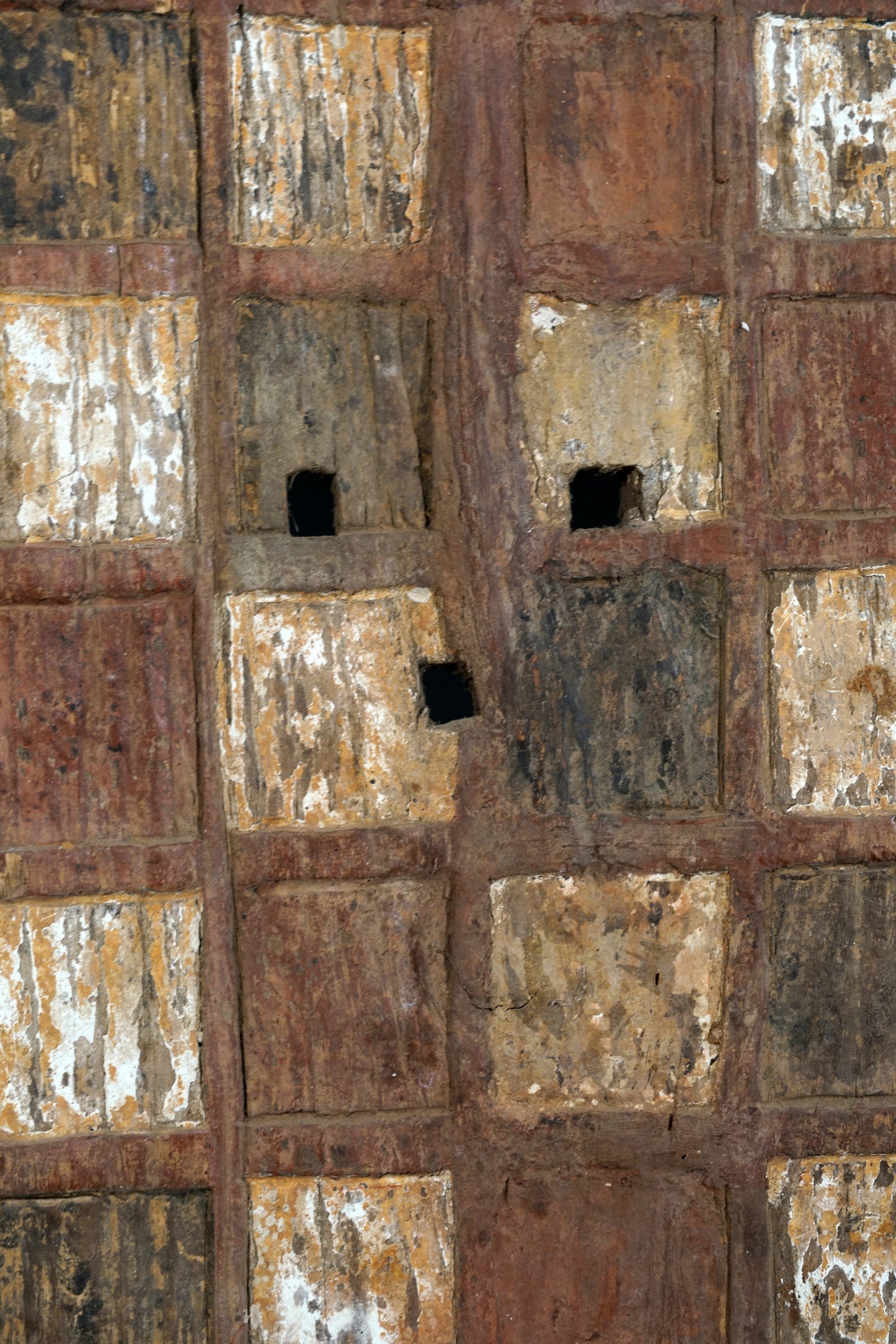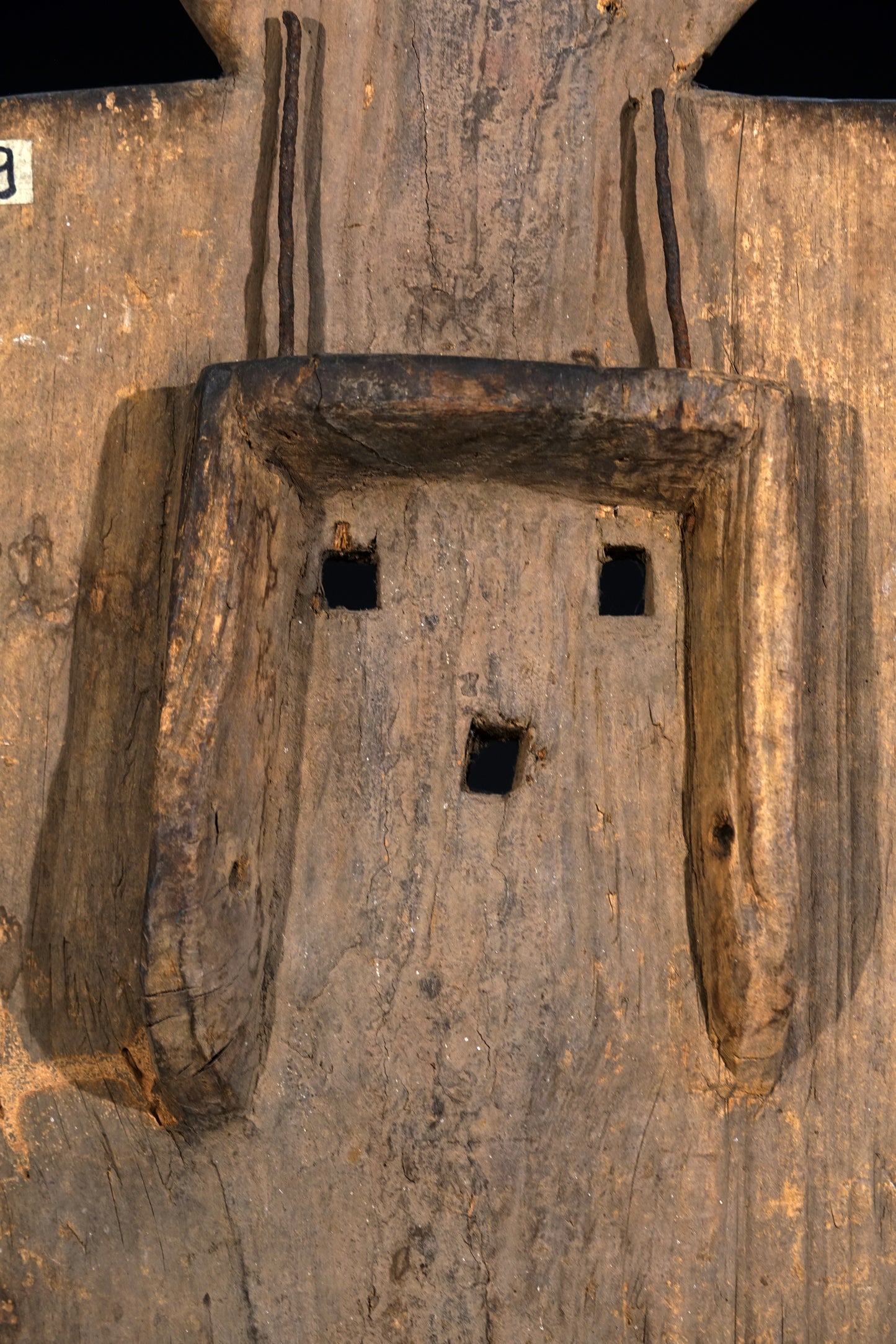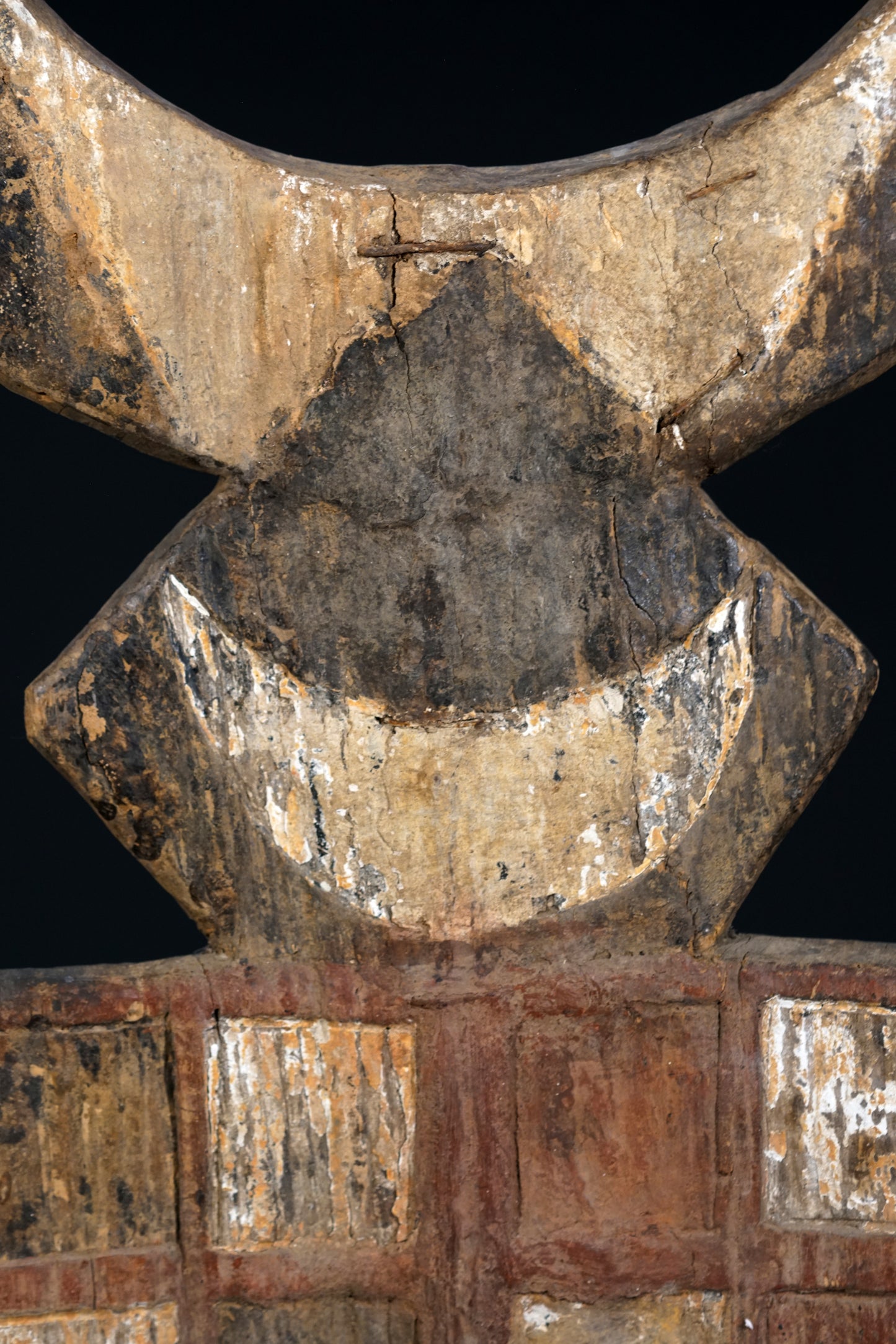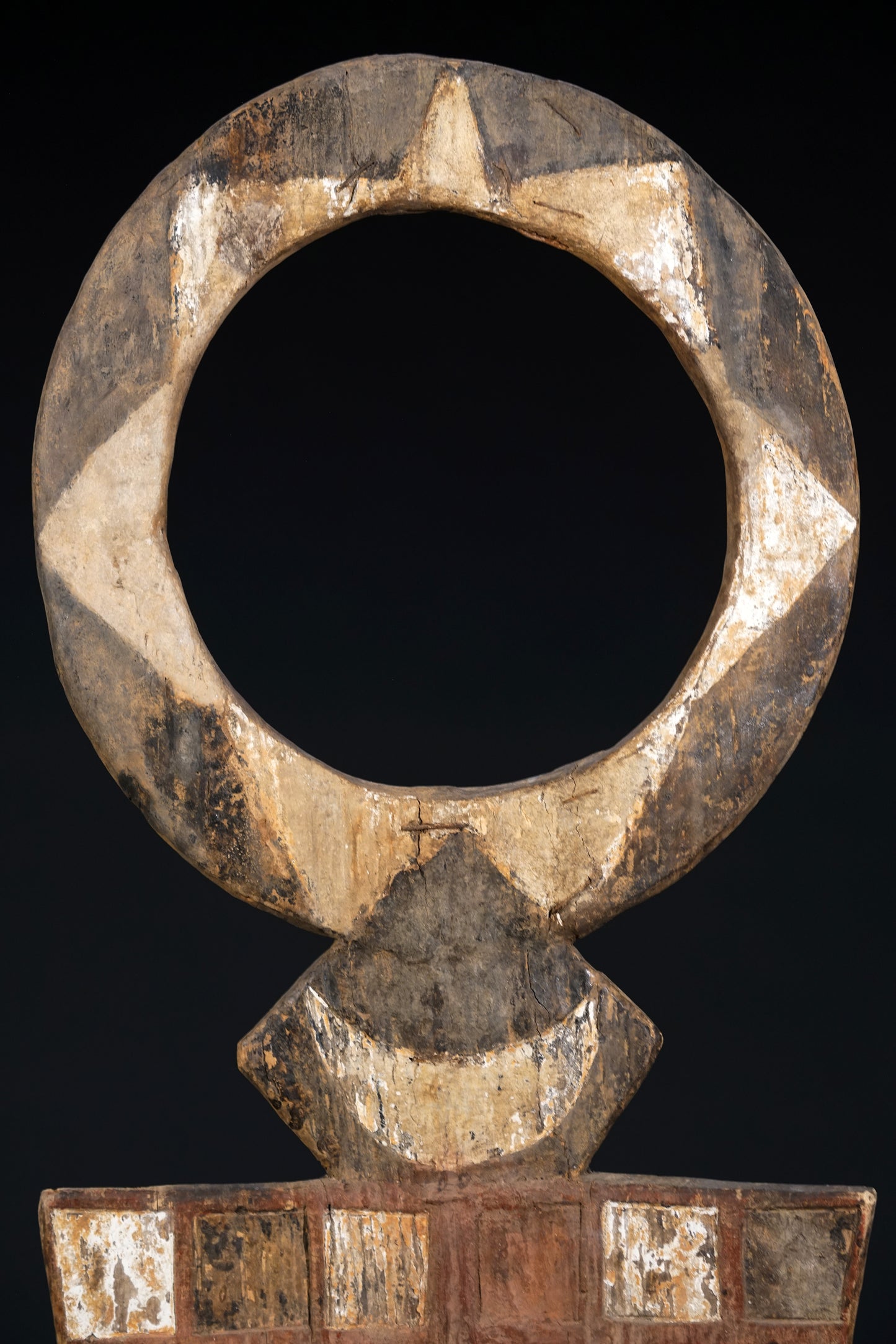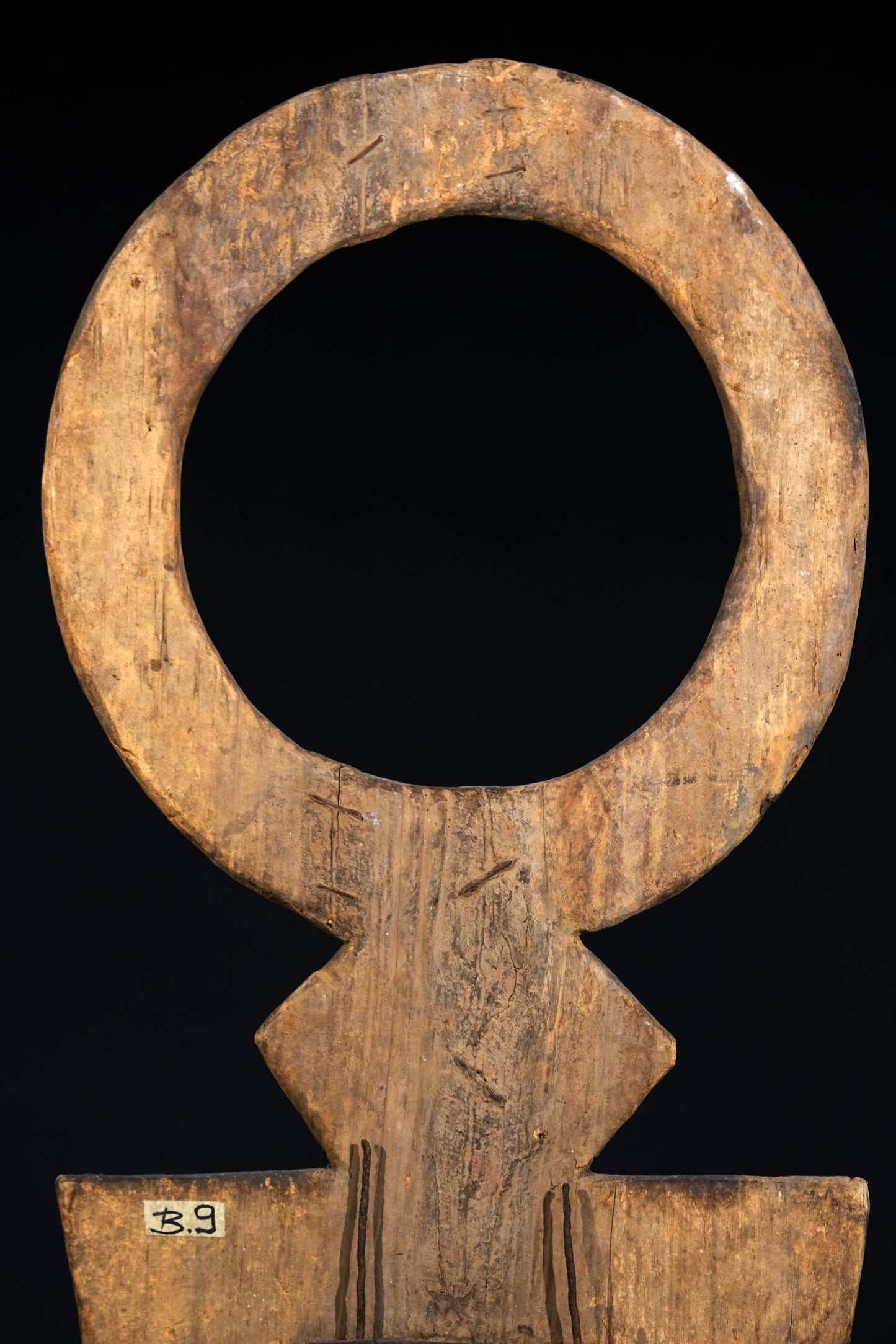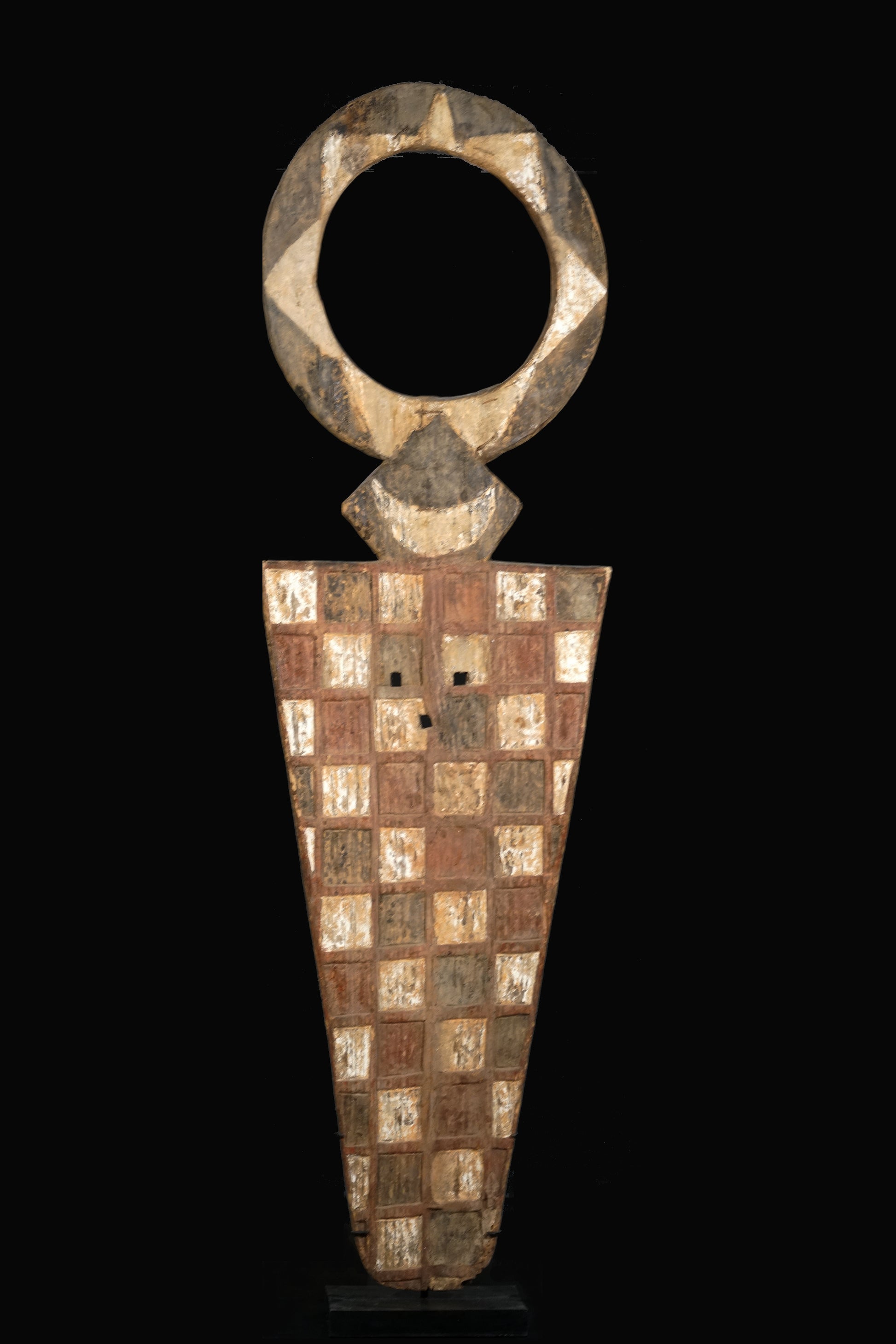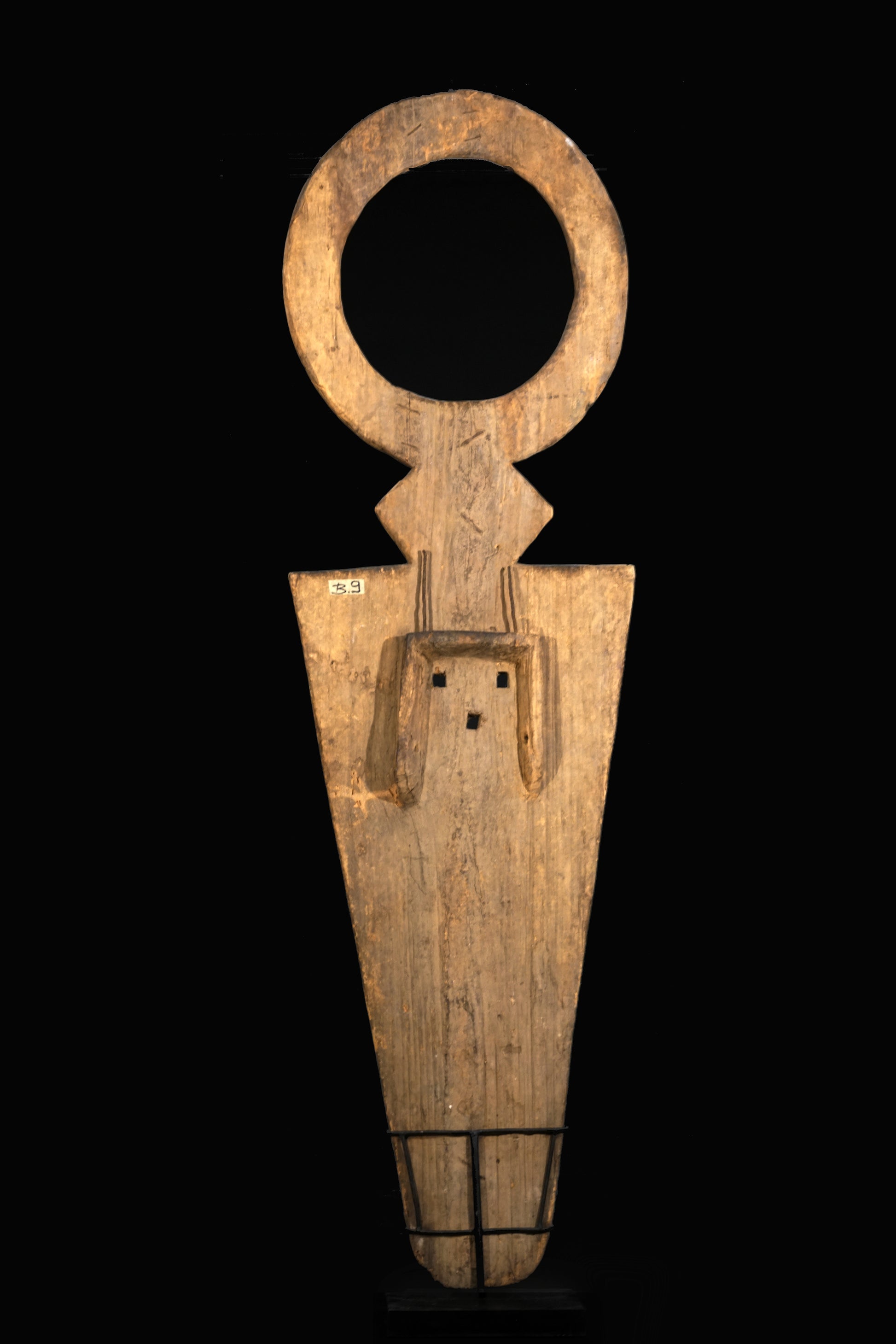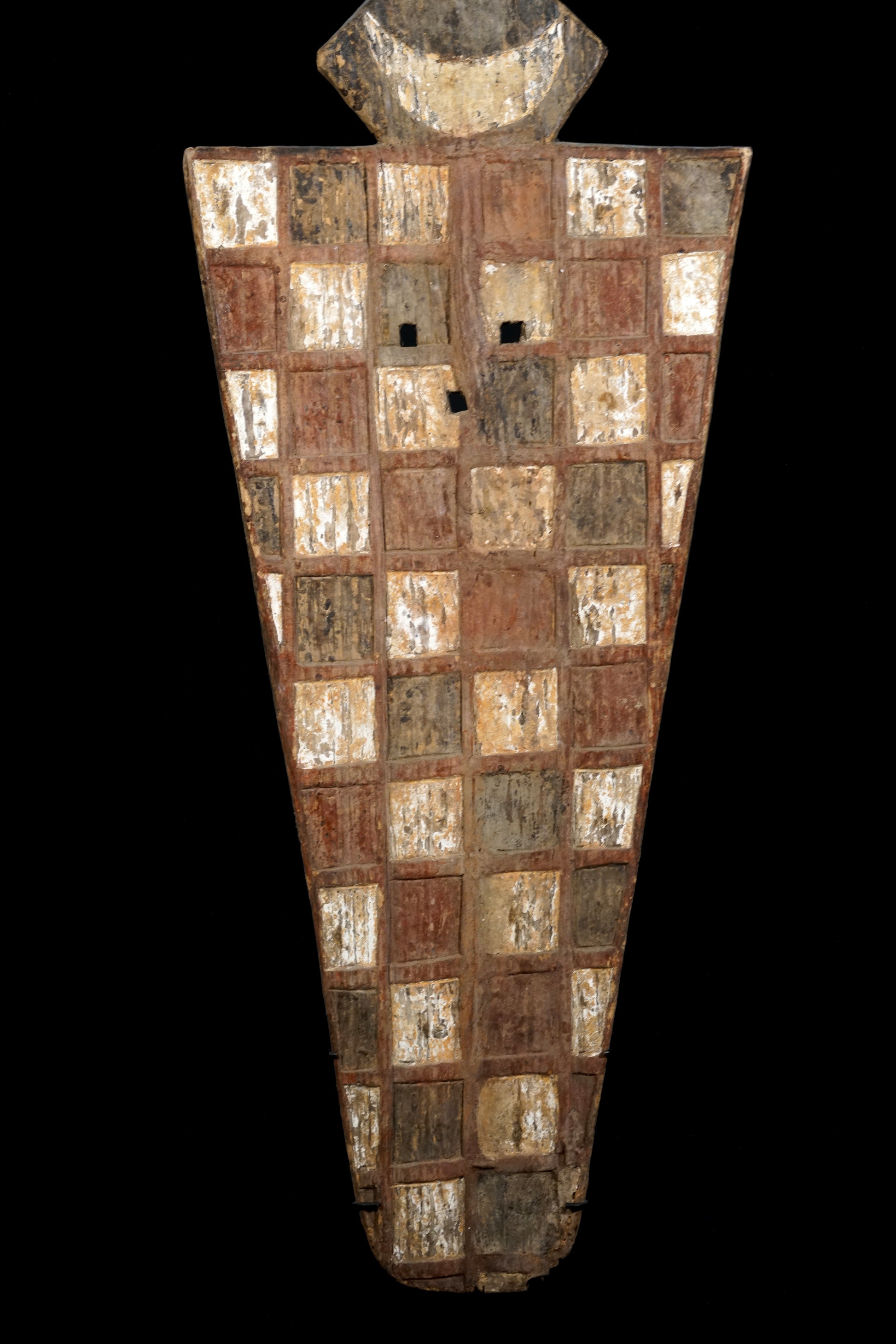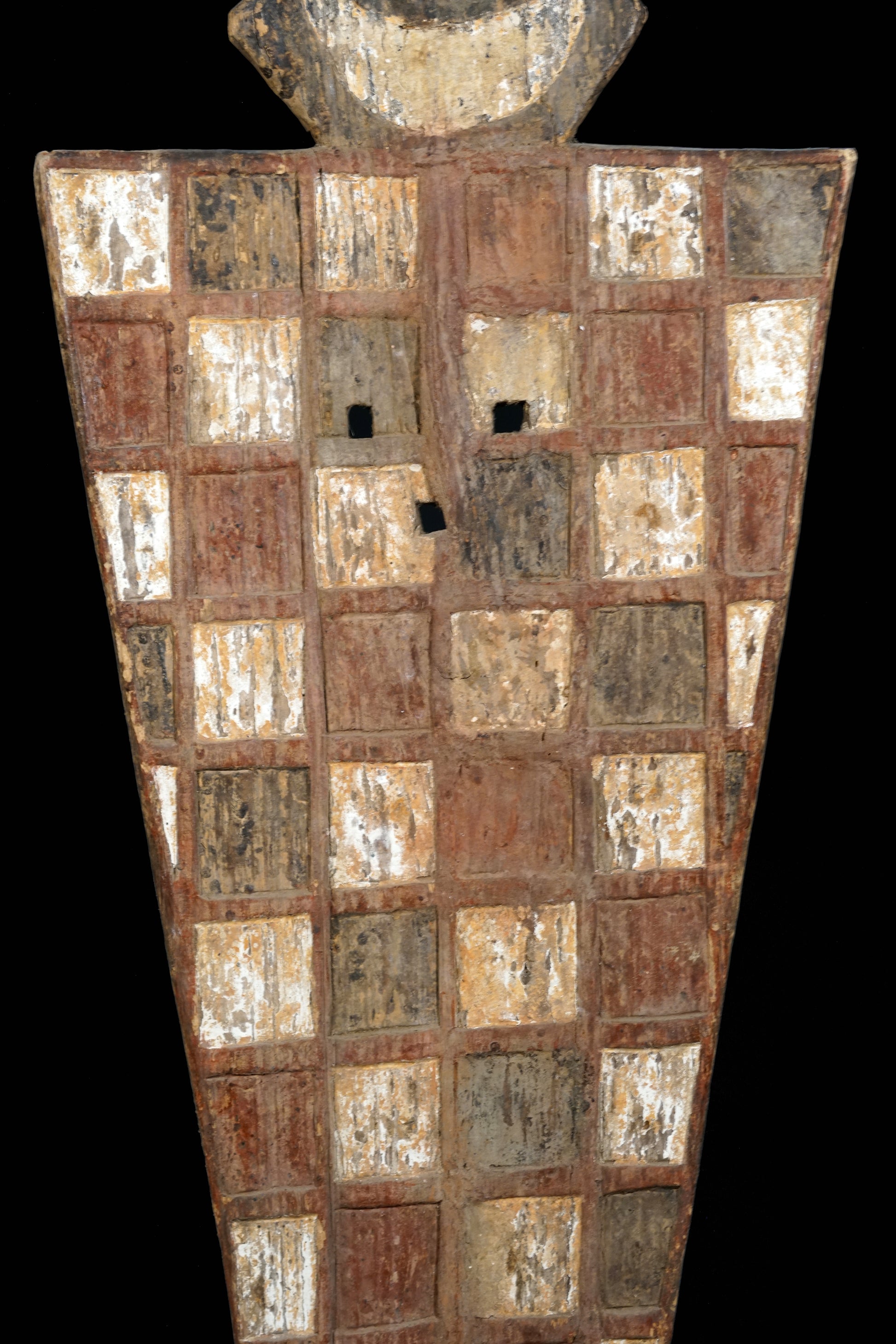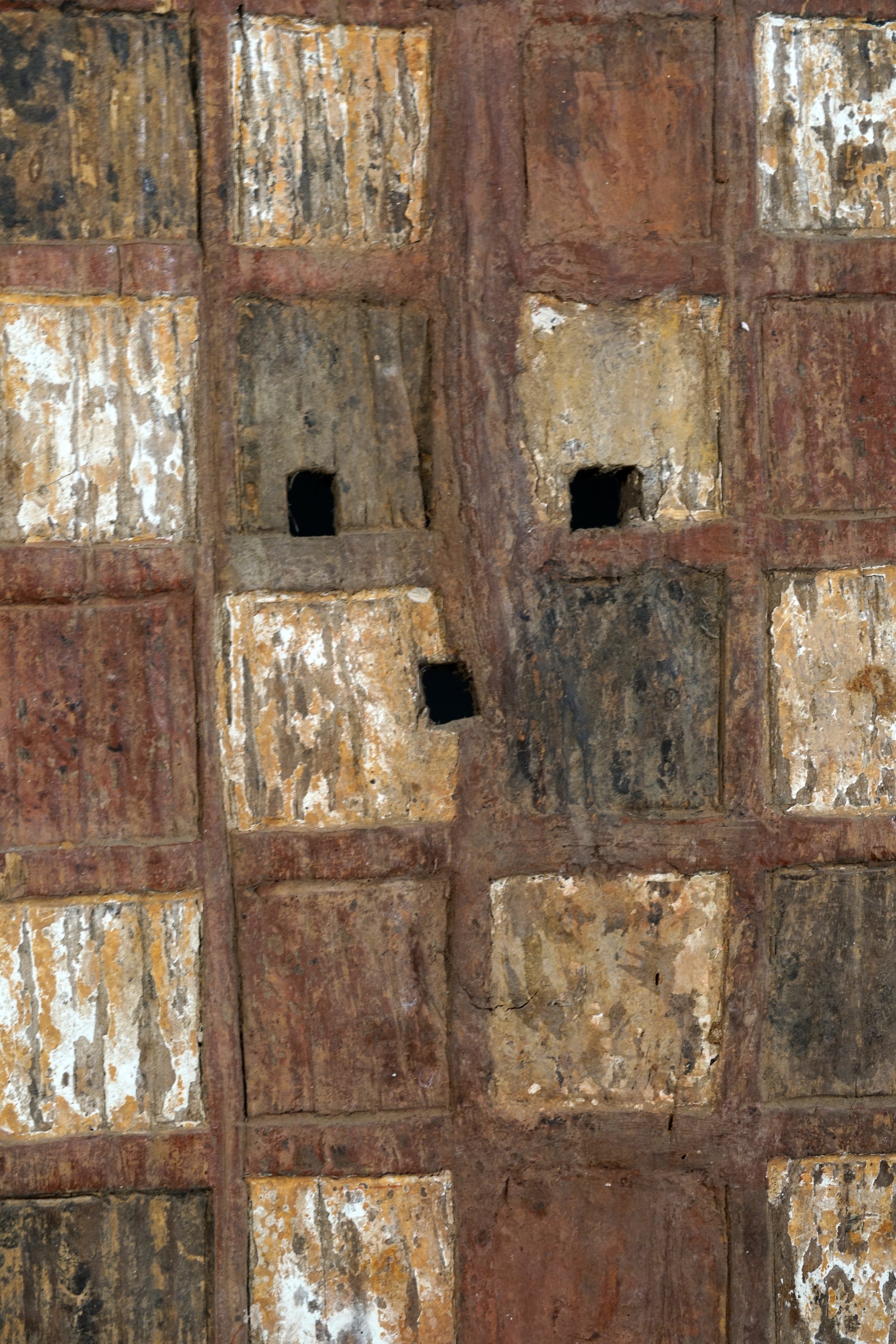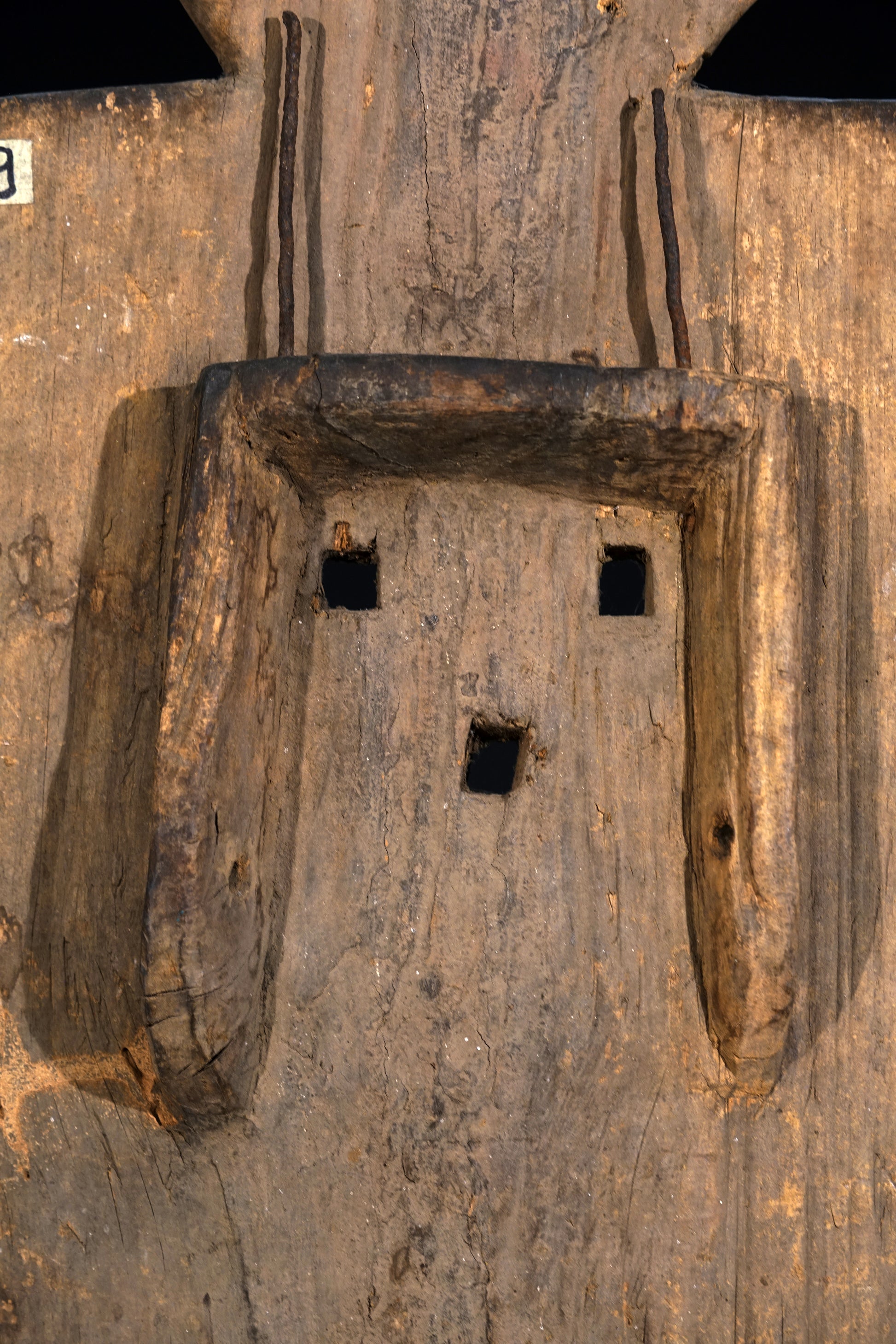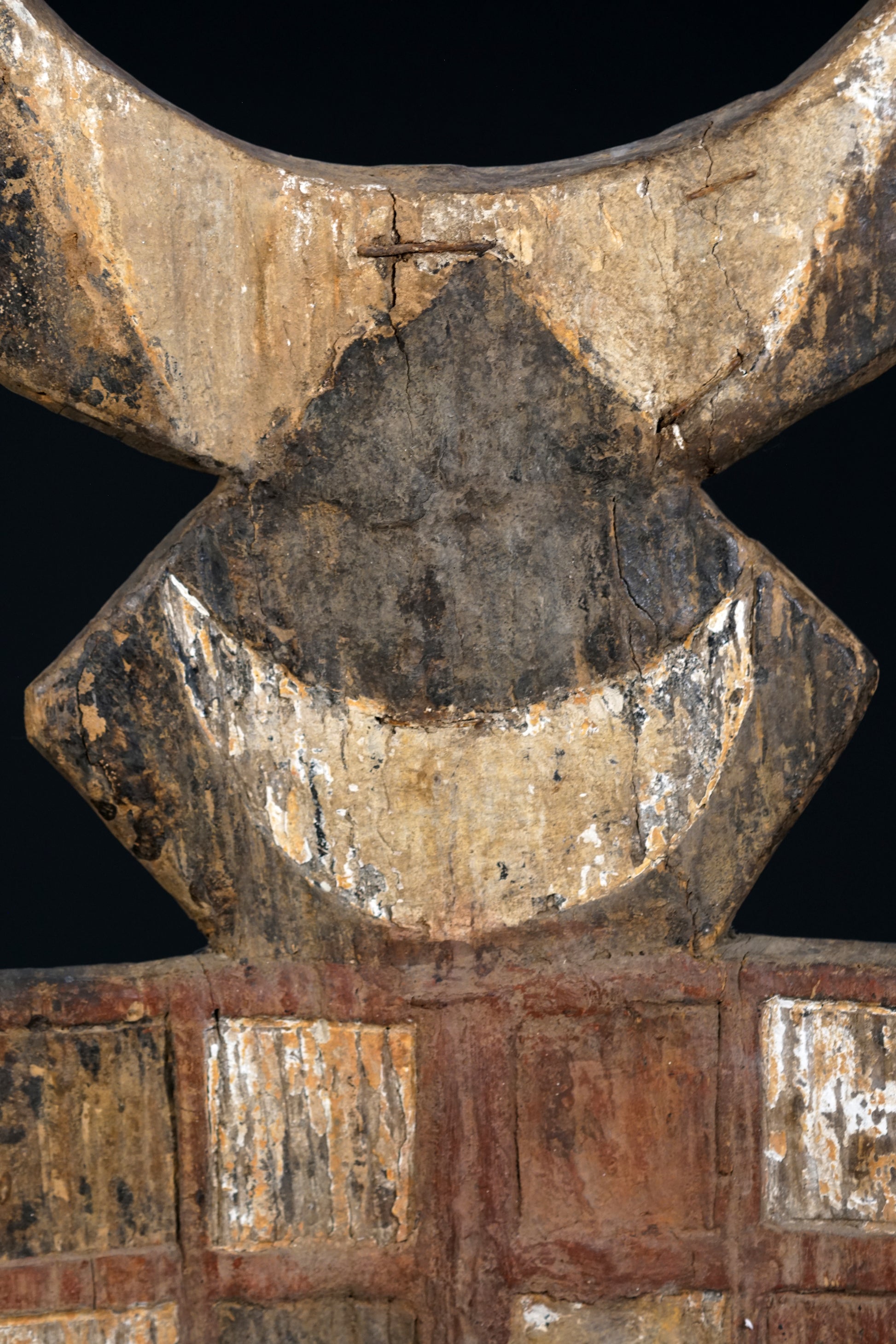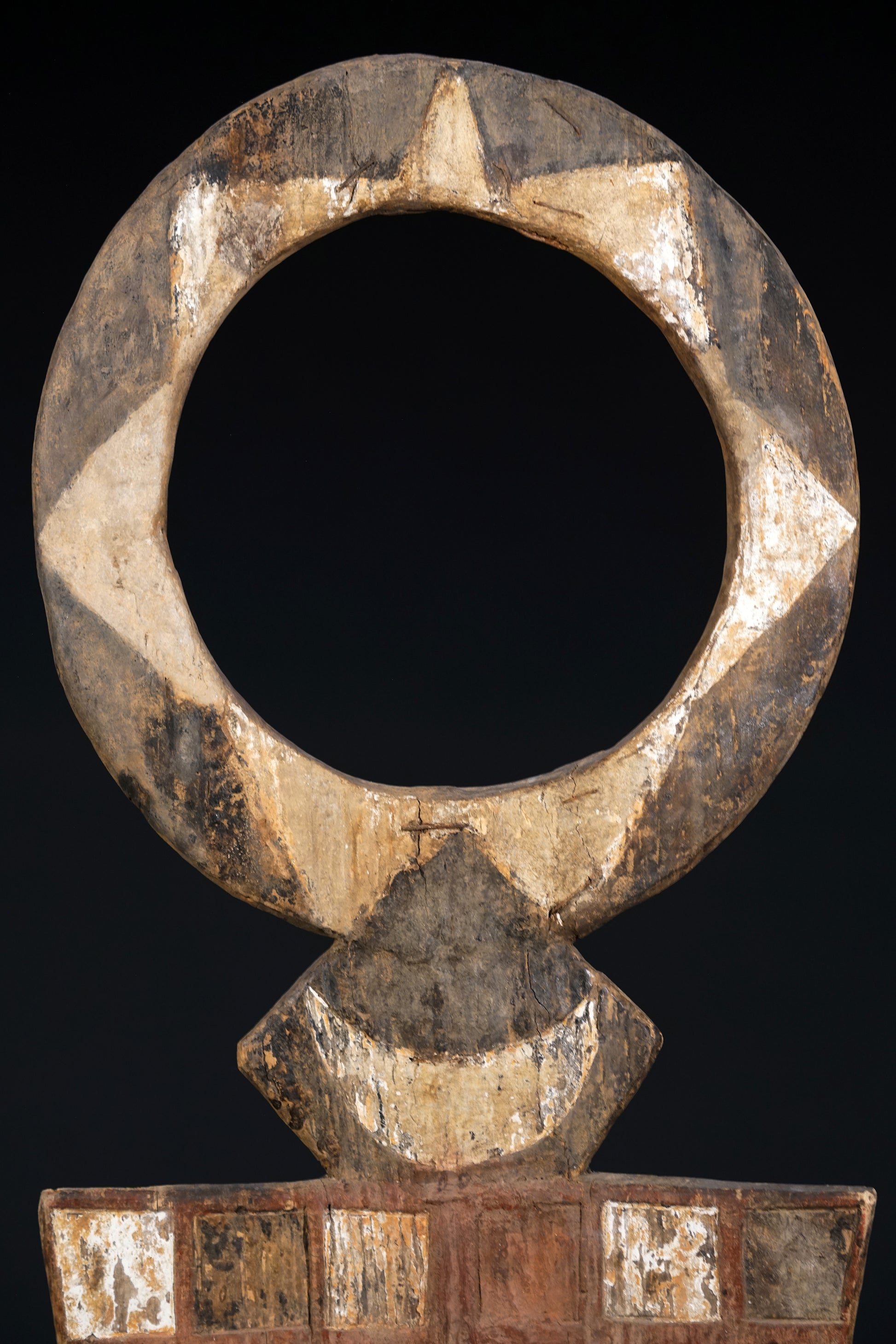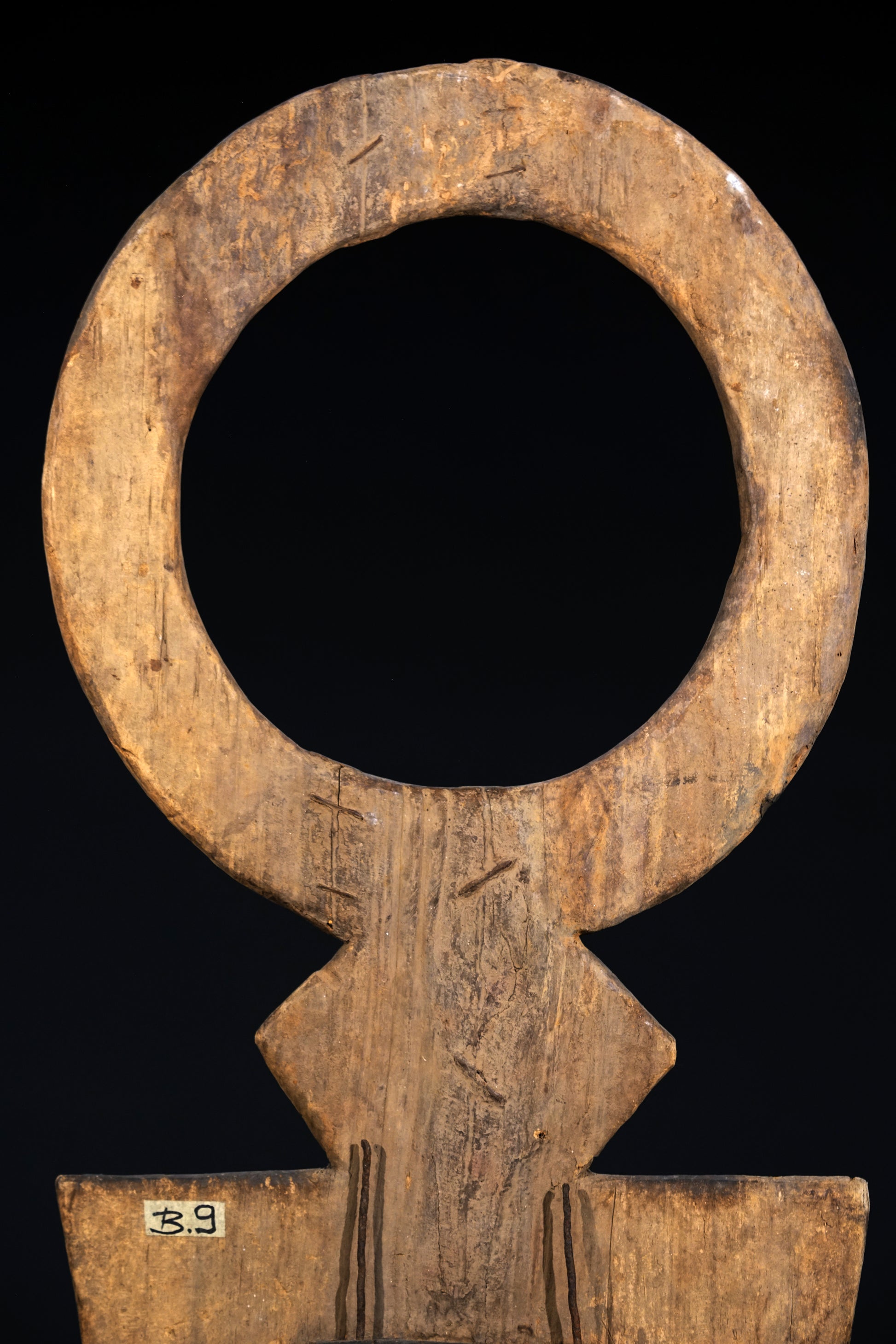wolfgang-jaenicke
A Plank Mask - Bedu - Nafana related
A Plank Mask - Bedu - Nafana related
Couldn't load pickup availability
A Plank Mask - Bedu - Nafana related, Cote d'Ivoire/Ghana/Burkina Faso, wood, the triangular corpus painted in black, reddish and white like a chessboard, beneath a circular top, surmounted on two geometrical painted staffs - symbolizing the horns of a bush cow (Bravman) - decorated with pattern marks the mask as feminine characterized by a more elaborate disk-shaped superstructure, different layers of pigments; several authentic repairs with strips of metal plates, partly rusty.
The masquerade cult of the Bedu, which is keeping disaster, illness, and fertility at bay and is increasing the community´s sense of well-being, is still existing in an adapted way. Bibliography: Bravman: 1974, Freyer: 1974 et al for a related exemplare s. A Plank Mask - Bedu - Nafana related.
These spectacular masks, which can exceed 6 FEET in height, are known as "Bedu." The dance in which they are used functions to rid the village of evil. The magnificence and geometric appeal of these masks represent one of the pinnacles of West African art, and they are eagerly sought after by collectors and decorators for their size and colourful, abstract appeal. The Nafana are a Gru-speaking people who are considered part of the Gurunsi group. Though they are a small culture--less than 50,000--they are scattered over parts of Cote d'Ivoire, Ghana, and Burkina Faso, and are mainly hunters and fishermen. They are justifiably famous for their huge "bedu" plank masks, which represent a bush cow. For more information, see ART OF AFRICA, by Kerchache, et al.
The Bedu masquerading tradition is limited to the region of Bondoukou. The mask type used goes back to early masks, called Sacrobundi, which were made by the Nafana. These were part of an institution that, in the nineteenth century, was disseminated in the Jaman kingdom, a Bron state, and the adjacent areas of what is today western Ghana. Under the influence of the Christian missionaries, the Sacrobundi mask dances were abandoned in the 1920 and 1930s. Yet at the same time, the first Bedu masks appeared among the Nafana, and were soon adopted by the Degha and Kulango. African masks from the Barbier Mueller Collection, Geneva, Iris Hahner-Herzog etc., Prestel, 2002: plate 19
1.600 - 2.000,- Euro
Height: 189 cm
Weight: 10,8 kg
